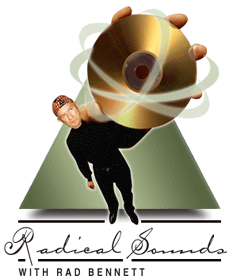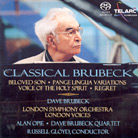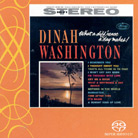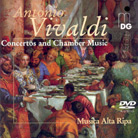 |
| January 1, 2004  Radical
Sounds: Its Own Reward
January is the traditional time for
all of us critical types to pick the best recording of the year. Or the best recording by
a new male artist. Or the best recording by a new female duo. Or the best recording by an
orchestra in Rochester. Or the best recording by a kazoo quartet. Or the best recording by
a left-handed, cross-dressing accordion player. Radical
Sounds: Its Own Reward
January is the traditional time for
all of us critical types to pick the best recording of the year. Or the best recording by
a new male artist. Or the best recording by a new female duo. Or the best recording by an
orchestra in Rochester. Or the best recording by a kazoo quartet. Or the best recording by
a left-handed, cross-dressing accordion player.
If all that seems a bit absurd, that is how awards in general seem to me. (As a self-proclaimed Radical, I can say that, right?) We either mix up genres that have little to do with one another to come up with a "best" that has little meaning, or we subdivide categories to such an nth degree that we admit there is no such thing as "best" at all. When I was a kid, we were brought up to believe that our reward in life was to be the best we could be using what we had to work with. I often wonder if that idea is even considered these manic days, where every field seems to put standards aside in order to achieve that big número uno. Yes, you read me right: Put standards aside and concentrate on hype. After all, if we tell people something is the best, it has to be, does it not? Well, here there will be no "Best of the Year" award. The plan at "Radical Sounds" has been to let the review be its own reward, by trying to pick the three or four better advanced-resolution recordings I’ve heard during any particular period. If a recording isn’t so hot, or merely average, I just don’t cover it. I felt honored to hear so many good discs during 2003, where artists and producers have done the best job possible, given what they had to work with. Congratulations to you all. Starting out the New Year, these three made the cut this month:
In addition to being one of the most sought-after jazz artists for going on 60 years, Dave Brubeck is also a highly respected composer of religious compositions for chorus and orchestra. These are structured on a large scale and feature accessible writing punctuated by jazz interludes. I find the latter curious. In some cases they seem to be improvisations on the material at hand, but in other cases I find them intrusive. A dramatic work such as Beloved Son, for instance, with its powerful fugal writing, would seem to stand on its own, in no need of a jazz assist. Nevertheless, the performances here are dedicated, polished, and nothing short of miraculous. Contemporary works are often tossed off without enough rehearsal, but these readings sound better prepared than your average Beethoven Ninth Symphony. The sound is among the best Telarc has produced in a multichannel format. The front soundstage is very three-dimensional. Percussion instruments, for instance, emerge with pristine clarity, though they sound at the back of the stage, where the performers actually were during the recording. The rear channels, here used to provide the space of a large hall, never call attention to themselves as such -- yet when I switched to the otherwise excellent two-channel track, the hall disappeared, folded into the front wall. One little thing: No lyrics are provided in the otherwise informative booklet.
In naming the great jazz singers these days, Sarah Vaughan, Ella Fitzgerald, Billie Holiday, and Peggy Lee will come up, but Dinah Washington is liable to be left out. I cannot imagine why. This program, recorded three years before her death, proves her one of the great blues singers, one who could project the full meaning of a text without resorting to vocal tricks. Washington kept it simple and direct. I’ve just experienced a love affair that went sour -- the kind in which, overnight, love turns to hate to despair -- and Washington’s every note hit a nerve. She’s the real deal, bringing supreme meaning and artistry to the title tune and to such classics as "Time After Time," "I Thought About You," and "I Remember You." Verve’s SACD remastering reveals every vocal nuance and tear. There are moments, as when the backup choir joins Washington in "Time After Time," when chills went up and down my spine. My only two complaints with this release: It’s short -- there was space to include some more outtakes or tunes from another session -- and the disc is not a hybrid, so it can be played only on an SACD player. The packaging preserves the original cover and notes, as well as a thoughtful retrospective essay.
I have always been extremely fond of recordings from Musickproduction Dabringhaus und Grimm (MDG). Many of this company’s CDs are among the most realistic-sounding in the classical music catalog. Imagine my delight on discovering, from distributor Koch International, that MDG’s catalog lists more than a dozen DVD-Audio discs as well. This seems to be a well-kept secret -- the titles have not appeared on any of the websites I cruise that sell high-resolution recordings. This delightful, buoyant Vivaldi DVD-A is a good place to start an MDG journey. The music is played with joy, even abandon, by the virtuoso players; the precision and intonation of every performance are spot on. The sound is rich and full, the sound of real instruments in a small but very resonant hall. The surrounds thus come into play, with quite a bit of sound bouncing off the side and rear walls. This never sounds electronically enhanced, but the way an ensemble of this sort would sound in a reverberant room. MDG uses a unique multichannel configuration called 2+2+2, in which the center-channel and LFE signals are fed to two "height" speakers placed above the left and right front speakers. Not having any extra speakers lying around, I didn’t get a chance to experiment with 2+2+2, but the disc worked just fine as regular 5.1. There’s also a clean-as-a-whistle set of two-channel 24-bit/48kHz tracks. That’s it for high resolution; this is one release in which the compatible DVD-Video Dolby Digital 5.1 track sounds inferior to the MLP. ...Rad Bennett
Ultra Audio is part of the SoundStage! Network. |
 Classical Brubeck:
Beloved Son, Pange Lingua Variations, Voice of the Holy Spirit, Regret
Classical Brubeck:
Beloved Son, Pange Lingua Variations, Voice of the Holy Spirit, Regret Dinah
Washington: What a Diff’rence a Day Makes
Dinah
Washington: What a Diff’rence a Day Makes Vivaldi: Concerto
in G Minor for Two Cellos, RV 531; Concerto in G for Recorder, RV 436; Concerto in D
Minor, "La Folia"; Concerto in D for Two Violins; Concerto in A Minor for
Recorder and Two Violins; Sonata in C Minor for Violin, Cello, and Basso Continuo
Vivaldi: Concerto
in G Minor for Two Cellos, RV 531; Concerto in G for Recorder, RV 436; Concerto in D
Minor, "La Folia"; Concerto in D for Two Violins; Concerto in A Minor for
Recorder and Two Violins; Sonata in C Minor for Violin, Cello, and Basso Continuo